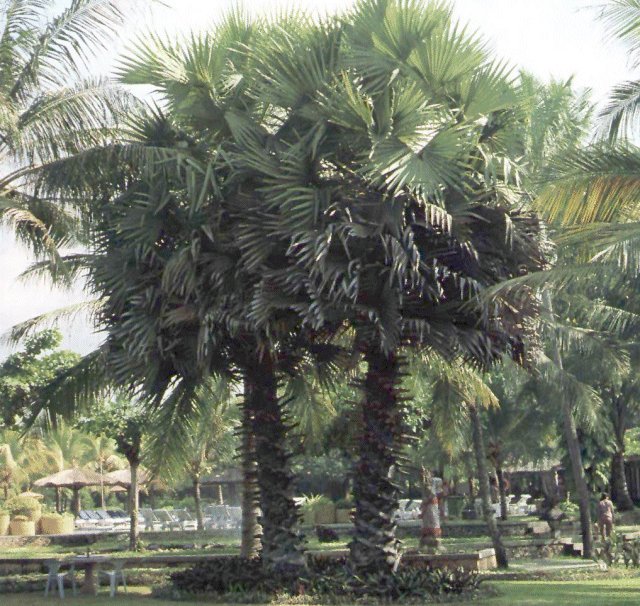| THE PALMYRA PROJECT: |
|
Membership | Origins of Project | Palm Art | Mission Statement | Palmyra products | Sign Guest Book | Friends of the Project |

|
The Palmyra Palm, scientifically known as
Borassus flabellifer:
The Palmyra is a tropical palm tree that grows indigenously in India, Sri Lanka, Malaysia, The Philippines, Indonesia and many parts of East Africa. It is prominent in the south Indian state of Tamil Nadu where it was proclaimed the state tree in 1978, but can also be found in throughout India in Kerala, Andrah Pradesh, Orissa, Bengal, Bihar and along the entire west coast. Botanists have successfully cultivated this palm in small numbers in North America, as well. This elegant palm has over 300 uses to mankind, but is currently under-developed and palmyra forests are being rapidly depleted. Ethno-Botany Traditionally, the Indian 'Nadar' community are the people who make their living from this tree using its wood, fruits, sap, stems, petioles and leaves to process a variety of food products, beverages, furniture, building materials, and handicrafts. However, due to environmental stress, modern methods of manufacture, and sociological changes, the Nadar community and other indigenous people have abandoned the palmyra and the lifestyle associated with producing palmyra products. Although handicrafts and many other marketable items can be created from this palm the social identity of this tree has been linked with low-caste and "backward" communities in Tamil Nadu. This association is in part due to the fact that palmyra toddy, a sweet fermented alcohol made from the tapped palm juice, was for centuries one of the primary products made in the region. As the Nadar community found more opportunities for education and employment in other fields, those who continued to work with the palmyra were looked down on. Today few people in India have retained the traditional skills needed to climb, tap, or process the palmyra's amazing range of products. Ecology This palm hs become especially vulnerable to rapid destruction during the past few decades. With increasing deforestation, the rise in house construction, and the increased activity of brick kilns (ovens which burn thousands of young palmyras every month to fuel brick production) -- the palmyras are not allowed to grow to full maturity or to produce the many products that sustain local communities. Defoliated trees which have been clipped too aggressively often suffer shock and die. In addition to these dangers, the rapidly expanding rubber plantation economy of neighboring Kerala state is disturbing the palmyra growing areas in Kanya Kumari, Tamil Nadu, and other vicinities so vital to the health and growth of this species. Without planting new seedlings, allowing female palms to bear fruit, or waiting to fell fully mature palmyras (at 75-100 years old), the future of the tree is uncertain. The lives of the people who depend upon this palm and the ecology of southern India may be greatly affected by the loss of this ancient and noble species.
|
|
|
|

A list of ways to get involved:
Links to other Palm sites! Click below!
International Palm Society
Fairchild Tropical Garden
Learn how to say Palmyra in Arabic! & Chinese!
United Nations report on Palmyra's potential
How to Grow a Palmyra!
Palmyra = Useful broom/scrub brush fiber
Palmyra = Some medical uses